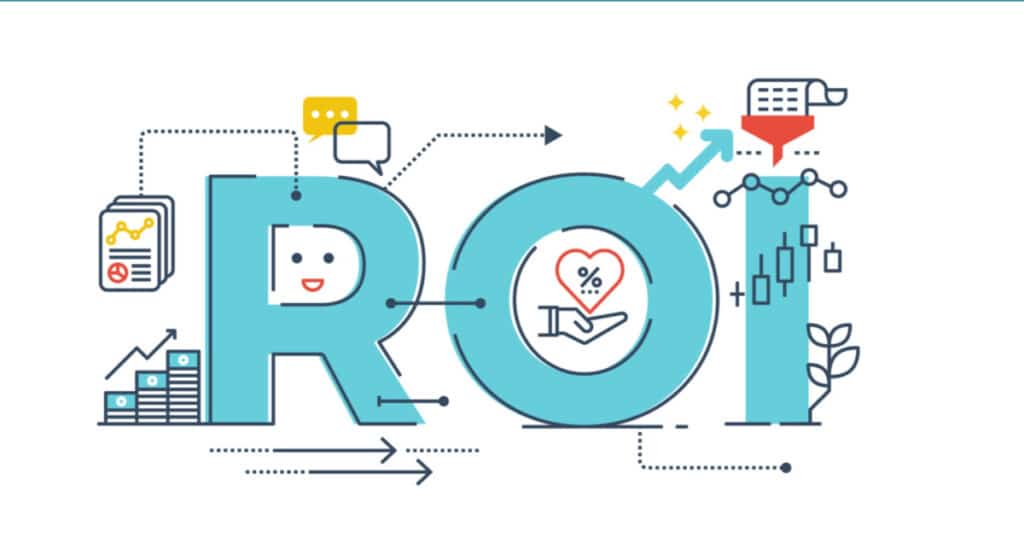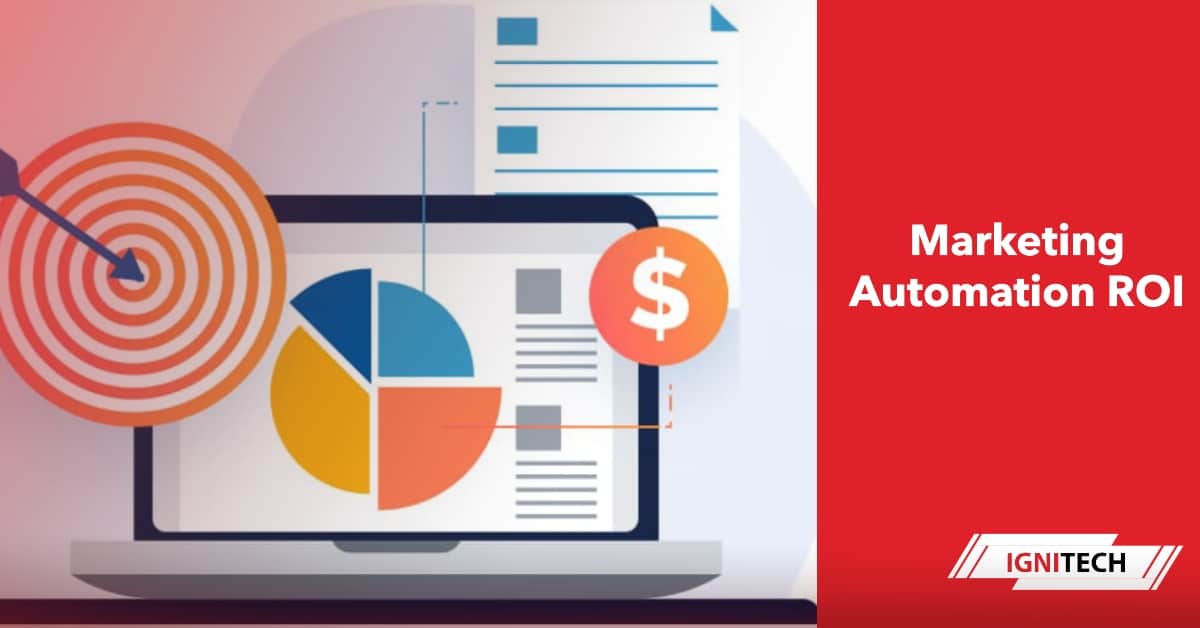Marketing automation has revolutionized how businesses approach their marketing strategies, offering unprecedented efficiency and personalization. However, the true measure of success lies in the return on investment (ROI) these automation efforts generate. This comprehensive guide will explore seven powerful hacks to maximize your marketing automation ROI, ensuring your efforts translate into tangible business growth.
Understanding Marketing Automation ROI

Before diving into the hacks, it’s crucial to grasp what marketing automation ROI entails. Marketing automation ROI refers to the measurable benefits a company gains from implementing automation tools and strategies compared to the resources invested. This metric is essential for justifying marketing expenditures and guiding future investments.
The Importance of Measuring Marketing Automation ROI
- Justifies marketing budget allocations
- Identifies most effective campaigns and strategies
- Guides optimization efforts
- Demonstrates marketing’s impact on overall business goals
Now, let’s explore the seven hacks that will supercharge your marketing automation ROI.
Hack #1: Strategic Segmentation for Targeted Campaigns
One of the most powerful ways to boost your marketing automation ROI is through strategic segmentation. By dividing your audience into specific groups based on various criteria, you can create highly targeted campaigns that resonate with each segment’s unique needs and preferences.
Steps to Implement Strategic Segmentation:
- Analyze your customer data
- Identify key segmentation criteria (e.g., demographics, behavior, purchase history)
- Create distinct audience segments
- Develop tailored content and offers for each segment
- Implement automated workflows for each segment
Marketing automation strategies that leverage strategic segmentation can significantly improve engagement rates, conversion rates, and ultimately, ROI.
| Segmentation Criteria | Example |
|---|---|
| Demographics | Age, Gender, Location |
| Behavior | Website activity, Email engagement |
| Purchase History | Frequency, Average order value |
| Customer Lifecycle Stage | New lead, Repeat customer |
Hack #2: Personalization at Scale
Personalization is no longer a nice-to-have; it’s a necessity. Marketing automation allows you to personalize your marketing efforts at scale, dramatically improving engagement and conversion rates.
Key Personalization Techniques:
- Dynamic content insertion based on user data
- Personalized product recommendations
- Behavior-triggered emails and notifications
- Custom landing pages tailored to user segments
Implementing these personalization techniques can significantly enhance your marketing automation ROI by creating more relevant and compelling experiences for your audience.
Hack #3: Multi-Channel Integration
To maximize your marketing automation ROI, it’s essential to create a seamless experience across all customer touchpoints. Integrating your marketing automation efforts across multiple channels ensures consistent messaging and a cohesive customer journey.
Channels to Integrate:
- Email marketing
- Social media platforms
- Website personalization
- Mobile app notifications
- SMS marketing
- Paid advertising
By orchestrating your marketing efforts across these channels, you create a unified brand experience that reinforces your message and drives better results. eCommerce marketing automation particularly benefits from this multi-channel approach, as it allows for consistent messaging throughout the customer’s buying journey.
Hack #4: Continuous Testing and Optimization
The key to improving your marketing automation ROI lies in constant refinement. Implement a rigorous testing and optimization process to identify what works best for your audience and continuously improve your campaigns.
Elements to Test:
- Subject lines
- Email content and design
- Call-to-action buttons
- Landing page layouts
- Offer types and messaging
- Send times and frequencies
Use A/B testing methodologies to compare different versions of your marketing assets and determine which performs best. This data-driven approach ensures that your marketing automation efforts are always improving, leading to better ROI over time.
Hack #5: Lead Scoring and Nurturing
Not all leads are created equal. Implementing a robust lead scoring and nurturing system can significantly improve your marketing automation ROI by focusing your efforts on the most promising prospects.
Implementing Lead Scoring:
- Define criteria for scoring (e.g., demographic fit, engagement level, website behavior)
- Assign point values to each criterion
- Set up automated scoring rules in your marketing automation platform
- Establish thresholds for different lead categories (e.g., cold, warm, hot)
Once you’ve implemented lead scoring, create targeted nurturing campaigns for each lead category. This ensures that each prospect receives the right content at the right time, moving them efficiently through the sales funnel.
Marketing automation best practices often emphasize the importance of lead scoring and nurturing in maximizing ROI.
Hack #6: Predictive Analytics and AI Integration
Leveraging predictive analytics and artificial intelligence can take your marketing automation ROI to the next level. These technologies can help you anticipate customer behavior, optimize campaign timing, and personalize content more effectively.
Applications of Predictive Analytics and AI:
- Customer churn prediction
- Next best offer recommendations
- Optimal send time prediction
- Content optimization
- Automated segment discovery
By incorporating these advanced technologies into your marketing automation stack, you can make more informed decisions and create more effective campaigns, ultimately driving higher ROI.
Hack #7: Streamlined Workflow Automation
Efficiency is key to maximizing your marketing automation ROI. By streamlining your workflows and automating repetitive tasks, you can free up your team to focus on high-value activities that drive results.
Areas for Workflow Automation:
- Lead assignment and routing
- Data entry and management
- Report generation
- Social media posting
- Campaign setup and launch
Implementing these automation workflows can significantly reduce manual effort, minimize errors, and ensure consistent execution of your marketing strategies.
Marketing automation implementation should prioritize workflow optimization to maximize efficiency and ROI.
Measuring and Reporting on Marketing Automation ROI

To truly unleash the power of marketing automation ROI, you need to measure and report on your results effectively. This allows you to demonstrate the value of your efforts and make data-driven decisions for future improvements.
Key Metrics to Track:
- Conversion rates
- Customer lifetime value
- Cost per lead
- Lead-to-customer ratio
- Email engagement rates
- Campaign ROI
Create comprehensive dashboards that showcase these metrics and how they’ve improved over time. Regular reporting helps justify your marketing automation investments and guides future strategy decisions.
Overcoming Common Marketing Automation ROI Challenges
While the potential for high ROI with marketing automation is significant, businesses often face challenges in realizing these benefits. Here are some common obstacles and how to overcome them:
Data quality issues: Implement rigorous data cleansing processes and regular audits to ensure your automation is working with accurate, up-to-date information.
Lack of alignment between marketing and sales: Foster collaboration through shared goals, regular communication, and integrated systems.
Insufficient resources: Consider partnering with a marketing automation agency or seeking marketing automation consulting tips to supplement your team’s capabilities.
Inadequate strategy: Develop a comprehensive marketing automation strategy that aligns with your overall business objectives.
Technology limitations: Regularly assess your marketing automation platform to ensure it meets your evolving needs, and be prepared to upgrade or switch providers if necessary.
Conclusion:
By implementing these seven hacks, you can significantly boost your marketing automation ROI and drive substantial business growth. Remember that maximizing ROI is an ongoing process that requires continuous monitoring, testing, and optimization.
To recap, the key hacks for unleashing the power of marketing automation ROI are:
- Strategic segmentation for targeted campaigns
- Personalization at scale
- Multi-channel integration
- Continuous testing and optimization
- Lead scoring and nurturing
- Predictive analytics and AI integration
- Streamlined workflow automation
As you implement these strategies, keep in mind that the landscape of marketing automation is constantly evolving. Stay informed about new technologies, trends, and benefits of marketing automation to ensure your efforts remain cutting-edge and effective.
By focusing on these proven hacks and maintaining a commitment to data-driven decision-making, you’ll be well-positioned to achieve exceptional marketing automation ROI and drive your business forward in the competitive digital marketplace.
FAQs
Major benefits include increased efficiency, better data insights, higher conversion rates, expanded reach, consistent branding, and cost savings from automating manual processes.
Goals may include increasing leads, reducing cost-per-lead, boosting engagement rates, driving more site traffic, and growing social followers.
Look for 1-2 use cases strongly aligned to your overall business and revenue goals. Common options are lead nurturing, email marketing, event management, and social media.
Integration allows for complete cross-channel customer data and insights. This enables more personalized and consistent messaging across touchpoints.
Map journeys for each persona and identify the optimal content and triggers for each step. Refine based on attributes like interests, role, firmographics.
Use A/B testing, campaign audits, and performance data to refine content, segmenting, targeting, and channels. Optimization is an ongoing process as customer preferences evolve.
 Anas is our go-to copywriter with a knack for crafting persuasive and high-converting eCommerce landing pages. His passion for words and understanding of consumer psychology helps turn visitors into loyal customers. When he's not refining his copy, Anas enjoys exploring the latest digital marketing trends and experimenting with new writing techniques. His blend of creativity and strategic thinking makes him an indispensable part of our energetic team.
Anas is our go-to copywriter with a knack for crafting persuasive and high-converting eCommerce landing pages. His passion for words and understanding of consumer psychology helps turn visitors into loyal customers. When he's not refining his copy, Anas enjoys exploring the latest digital marketing trends and experimenting with new writing techniques. His blend of creativity and strategic thinking makes him an indispensable part of our energetic team.












